‘Cradle of civilization’ of the world
Today, Nakhchivan which is called a cradle of civilization is celebrating the 90th anniversary of establishment of Nakhchivan Autonomous Republic with its ancient history.
Nakhchivan Autonomous Republic is located in the southeastern part of Azerbaijan. The capital of the Autonomous Republic is Nakhchivan city and the districts of it are comprised of 172 administrative-territorial units. Nakhchivan Autonomous Republic is bordered with Armenia in the north and east (246km), with Turkey (11km) in the west, and with Iran (204km) in the west and south with its 5,500 sq. km area. The strip of land at a distance of 44-45 km of width extending towards the Araz River separated the Nakhchivan from the rest of the territory of the Republic of Azerbaijan as a result of the illegal allot of Zangazur district, the ancient Azerbaijan land, to Armenia in 1920 by the Soviet leadership.
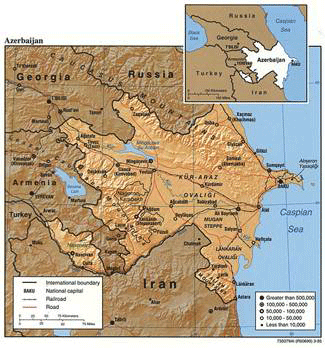
According to the new Constitution of the Azerbaijan Republic received by the referendum in 1995, Nakhchivan is the autonomous state within the Republic of Azerbaijan. The national symbols of Nakhchivan Autonomous Republic are the national flag, emblem and the national anthem of the Azerbaijan Republic.
The number of population of Nakhchivan reached 435,4 thousand in 2014. Ethnic composition of population consists of Azerbaijanis (99.5%).
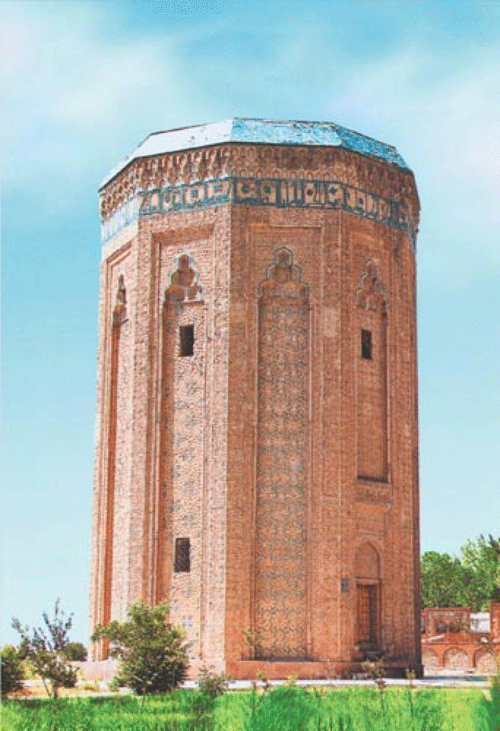
The Autonomous Republic has always drawn attention with its climate and natural resources. The climate is strongly dry and continental. Temperature varies from +43C in summer to -30C in winter. There are 400 big and small rivers in Nakhchivan Autonomous Republic with the total length of 1,8 thousand km and natural lakes mainly belong to the valleys of Nakhchivanchay and Gilanchay.
The Autonomous Republic features rich deposits of arsenic, copper, gold, sulphur, polymetal, travertine, dolomite, rock salt, marbled limestone, plaster stone and unique mineral waters - Sirab, Badamli, Vaikhir, Nagadzhir and Gizildzhir.
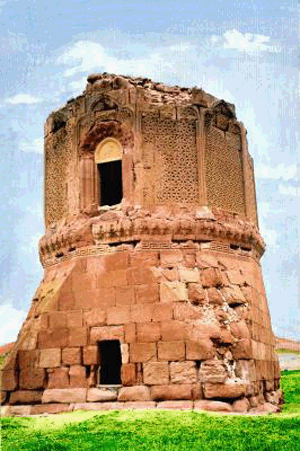
There are 1162 historical-cultural monuments in Nakhchivan Autonomous Republic. 58 monuments are of the world importance, 455 monuments are of the country importance and 649 monuments are of the local importance. The Gazanchi fortress (3 millennium B.C), Alinjagala (III century), “Ashabi-Kahf place of pilgrimage”, The Noah tomb (VIII-XII century), The Gamigaya pictography, The Momuna khatin tomb (XII century), The Gulustan tomb (XIII century), The Nakhchivan ice-house (XIV century) and Husein Javid mausoleum are some of those important historical monuments.
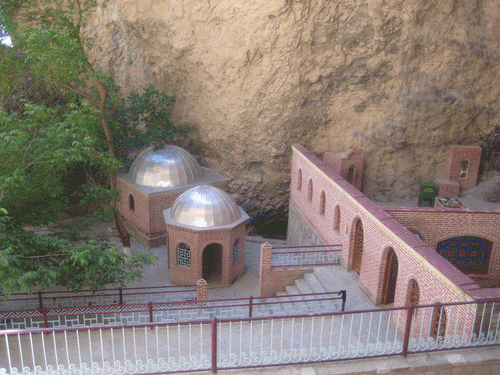
Nakhchivan is one of the ancient cultural centers in the world. The historical, scientific and cultural heritage of the Azerbaijan people was formed in this land. The cultural specimens discovered demonstrate the people living here since the Stone Age. It is not coincidence that ancient stone tools found in salt-mines, colored earthenware found in Gızılburun, revealing of the stone with human pictures on it. The first written information was come across in the masterpiece "Geography" of Clavdi Ptolomeous, a famous Greek geographer and astronomer, and the name of the city was dubbed Naksuana. Stefan Ozbeliani, middle age historian, who stated that the foundation of Nakhchivan city was laid down in 1539 B.C. The systematized written sources, the archaeological materials discovered in the area of Nakhchivan, the famous Gamigaya petrography and other monuments in the territory once again prove that the age of Nakhchivan is around 5 thousand years.
Throughout the ages, Nakhchivan has undergone serious attacks of many foreign powers. One of the most dangerous threats against Nakhchivan in late century, was the land claims by Armenians. Those claims became very intensive at the end of 1917 and at the beginning of 1918. In general, starting from the early 20th century, Armenians began to procreate genocide against Azerbaijanis from time to time under the protection and support of the Soviet rulers. In total, around 73,700 Turk-Muslim people were wildly killed in Nakhchivan region by the Armenian robber bands in 1918-21. More than 45 thousand people had to move to the northern part of Iran because of massacre.
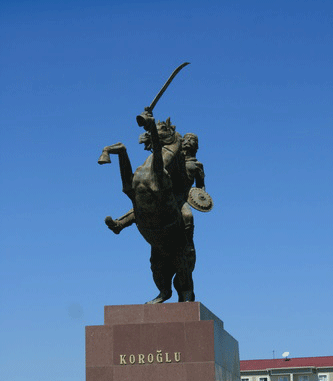
After the establishment of the Azerbaijan Soviet Socialist Republic on April 28, 1920, separation of Nakhchivan from Azerbaijan were main agenda of Armenia and their supporters at the leadership of Soviets. Turkey had a great role in getting the status of the autonomy of Nakhchivan within Azerbaijan and as a result of the Mudros (1918) and Kars (1921) agreements signed with Soviet Russia and three Soviet republics of the South Caucasus, Nakhchivan got recognized as an autonomous region under the patronage of Azerbaijan without making concessions for any third state regarding the borderlines. And Nakhchivan was turned to Autonomous Republic on February 9, 1924.

In the late 20th century, Nakhchivan Autonomous Republic has again become one of the hot points of the region. The Armenians using the political situation of the final period of the Soviet Union resumed their works to realize the incomplete insidious plan of early 20th century. Hence, the Republic of Azerbaijan again confronted with the Armenian terrorism and the armed attacks were launched onto Karabakh and Nakhchivan. In the wake of aggressive policy pursued by Armenia, the existing railway line and motor-way joining Nakhchivan with the other regions of Azerbaijan were closed, and Nakhchivan being isolated was constrained to subsist under the blockade conditions.
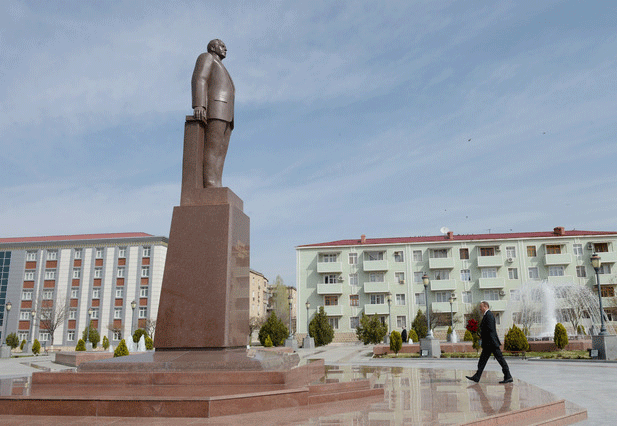
Nakhchivan Autonomous Republic is indebted to Heydar Aliyev, national leader of the Azerbaijani people. In the hard years the people of Nakhchivan Autonomous Republic did their best to return Heydar Aliyev to the power for establishing an independent statehood for ensuring the territorial integrity and regaining all kinds of democratic values in the country. On September 3, 1991 in the extraordinary session of the Supreme Majlis of Nakhchivan Autonomous Republic, Heydar Aliyev took the responsibility to be Chairman of the Supreme Assembly. Namely, thanks to Heydar Aliyev's initiative, the national state symbols of Azerbaijan were first time accepted in Nakhchivan, the "Soviet Socialist" phrase was extracted from the name of the Autonomous Republic, the work of local agencies of the communist party was ceased, the referendum for the continuation of USSR was refused, and the decision was taken to name the Supreme Soviet as the Supreme Assembly of the Autonomous Republic. Thenceforward, Soviet troops were taken out from the region, Azerbaijan's 3-colour flag was raised in border points, the decrees establishing principles of historical justice and independent statehood were issued, the agrarian reform was conducted, the important measures were taken in order to ensure the protection of people and soil, and the query regarding the solidarity day of world Azerbaijanis was raised before the Supreme Soviet of the Republic of Azerbaijan. On the other hand, the security of people was ensured in the autonomous republic, the Armenian occupation was prevented, the economic relations were granted with neighboring Turkey and Iran to compensate the blockade sufferings.

